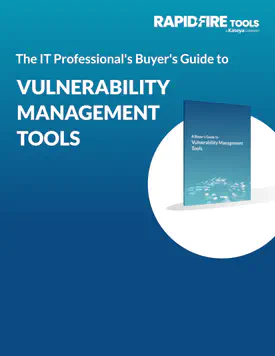A common cyberattack strategy involves scanning the target’s system for vulnerabilities. Once a weakness is discovered, hackers use it to their advantage. And for cybercriminals, it’s not the size of the business that matters, it’s the ease of access.
One of the easiest targets is exploit are known issues in software and operating systems. Many companies think that simply staying current on security patches will keep their systems in good health. Unfortunately, that assumption poses two risks:
First, a vulnerability must become known before a patch can be developed. What if cybercriminals discover the weakness before the software vendor? Secondly, patches won’t fix misconfigurations when a system is deployed in a misconfigured state. The system will remain in that misconfigured state no matter how many patches are deployed…until a vulnerability scan detects the issues.
That’s not to say that identifying issues and patching them isn’t a critical part of eliminating vulnerabilities, because it is. A vulnerability scan can help you identify what needs to be patched as well as a variety of other potential issues. And periodic vulnerability scans should be a requisite element of any MSP’s services.
For MSPs who recognize the need for patching and the value in vulnerability scans there’s VulScan by RapidFire Tools. It’s purpose-built and priced for MSPs and includes everything needed to improve client security without breaking the bank.
VulScan delivers all the features you need and allows you to perform as many scans as you want, as frequently as you want, for as many assets, at any client site — all for one low monthly cost.
Click here to get your demo of VulScan and learn more about how it helps you create greater profitability with Vulnerability Management.
